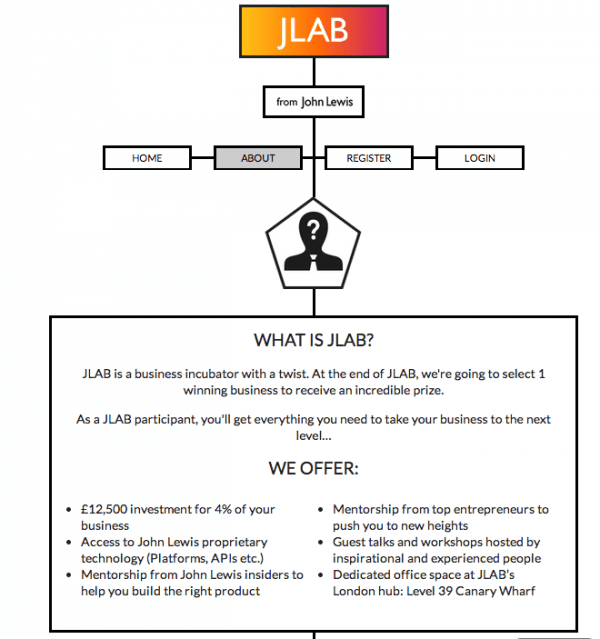The problem of digital silos
A common problem in many larger organisations is that given the importance of digital marketing, digital skills are centralised in one or more locations, so creating digital silos. So pockets of digital knowledge become dispersed internally rather than creating a joined up structure with different marketing teams working on marketing activities which integrate digital marketing.
In the long-term, integrating your digital marketing team is an essential requirement for organisations wanting ro re-invent their proposition to a changing digital world, being led by disruptive digital technology and new ways to reach new audiences and new channels.
But at the same time, businesses need to stay agile and review the latest innovations in digital technology and marketing. As organisations embark on transforming to a digital culture by moving away from a dispersed structure, creating a “digital centre of excellence” can help give focus on a digital first culture that not only provides consultancy internally for an organisation but also helps create a more agile team to service new market opportunities and initiatives within the external market.
To support a move to a digital centre of excellence, it is important an organisation is developing and training their workforce with the right digital skill-sets. One of the main obstacles to digital development within organisation are staff lacking suitable skill-sets or organisations hiring people with a digital knowledge but are hired into business departments not accustomed to hire or manage digital.
What is a Skunkworks?
Making the leap from a Dispersed structure to a Centre of Excellence can take a lot of internal time, necessary budget, buy-in and resource in getting senior management to consider a change in structure as well as culture, so to test the model in changing structure, embracing a Skunkworks type approach within a larger organisation could be an approach to explore. The term Skunkworks can be defined as a
“loosely structured group of people who research and develop innovative opportunities and business benefits”.
Often Skunkworks are labelled as Digital Labs or Digital Innovation centres also. Surprisingly the term is not new. It originated from a second world war R&D project known as the Lockheed Martin Skunk Works, over 70 years ago. Since then, its Skunkworks has provided helped enhance its global reputation as a pioneer in creating breakthrough technologies and continually to redefine flight.
Ideally, a Skunkworks has sufficient autonomy that it does not get sidetracked by current business needs. So it can operate as an off-shoot of the main organisation, protected from cultures and processes that inhibit progress and has a remit to create, develop and concept test new opportunities, products and services.
Using crowdsourcing to gain new ideas for digital innovation
Skunkworks will often benefit from bringing in new thinking from outside an organisation, for example using an open innovation platform like Innocentive. A recent retail example of this approach is the John Lewis JLabs approach which offers an incubator startup lab for several retail startups, one of which wins a prize.
5 techniques needed for a Digital Innovation Skunkworks
Before creating a Skunkwork or innovation lab, it is essential there are set measures in place to monitor and measure what benefit it is brining the organisation expecially during a phased to test approach.
Setting Objectives
Having senior management buy-in with set agreed set SMART objectives in place for the Skunkwork to achieve its goal or display value within an agreed timeframe will make the operation getting better buy-in.
It’s essential regular feedback is provided to the organisation offering transparency to what the team is working on and what it plans to deliver and achieve. Not only does this provide direction and buy-in from the organisation but this also provides the ability for the Skunkwork to feedback the changing market, new threats as well as opportunities that digital provides the organisation.
Digital Training
Implementing a digital first culture within the team will provide existing digital execs within the organisation an opportunity to work with an train non-digital staff members. recently reported a growing concern for orgnisations is a growing requirement to skill-up their workforce to become more digitally focused where it was recorded 90% of professionals say technology impacts their job, only 20% had the right skills.
Consider creating a digital and technology staff development framework geared towards a digital first culture and introduced to all existing staff and future recruits. I wrote about this in my post on the DARC framework for recruiting digital skills:
- Hire for Digital – People that understand digital and can display a knowledge.
- Hire for Analytics – An understanding of analysing trends and can interpret data to make actionable insights into changes in the digital market as well as being able to uncover opportunities
- Hire for Reach – can provide examples of how they can drive awareness of a product or service through different digital communication channels and finally
- Hire Content Creators – The skill set to be able to write for the web and engage with their target audience, whether B2C or B2B communities.
Collaboration
Working with more external organisations in partnership provides the organisation with a a model of sustaining innovation and making improvements to make the product or service better. Building relationships with non-compete organisations offer the opportunity to build knowledge sharing, reciprocal training and guest placements for employees to swap organisations.
Example: Two leading digital marketing companies in the US, Moz.com and Seer Interactive did exactly this when both their CEO’s swapped roles for a week and here is a brilliant post on the reasons why and opportunities it provided both companies
Listen to your customers
Build direct relationships with your existing customers learn their requirements and needs from the organisation in genetrating. Your customers provide the perfect real-time survey for what the outside world really thinks of your company proposition.
Digital has seen the rise in choice and convenience for customers who can decide to shun your proposition and move to a competitor so it’s essential you’re out there meeting up with customers face to face to understand their views, frustrations, thoughts and suggestions on what couldmake your organisation remarkable. Here is a list of organisations who have done just that to drive collaboration with their customers.
Example: Threadless – A T-shirt retailer who put at the hear of their business their customer base. To create ideas for designs for t-shirts, rather than employing a department of designers, Threadless ran design compeititions through their social network where member submitted their ideas for Tees and then the member voted on which designs they liked the best.
Growth HackingCalling for a re-position and re-think of how traditional marketing departments operate and relies on 4 key steps for Growth hacking as defined by author Ryan Holiday in his book Growth Hacker
- Step 1 – Product Market Fit (PMF)
PMF is the moment when the product and its customers are in perfect sync with each other. Don’t be afraid to launch the product and to learn from your audience on ways to improve its value, embrace the fear.
- Step 2 – Finding Your Growth Hack
Know your audience – this is essential to make your audience aware of the product/service you’re launching. The understanding of who your audience is, how they interact through digital and make them aware of your business.
- Step 3 – Going Viral
Growth Hacking is about launching your product as cheap as possible in a unique and differentiated way to your competitors and spreading virally is a central component to this i.e. you are relaying on your users to help spread the word.
Example: Dropbox built one of the most effective and most viral referral programs of the start-up world – the offer it put together was for its users who would receive 500 megabytes of free space for every friend they invited and got to sign up.
- Step 4 – Retention & Optimisation
In traditional marketing, it is the marketer to bring in the leads and potential customers. In the world of growth hacking marketing it’s the marketers responsibility to retain, understand and interact with your potential and converted customer through the use of analytics.
Conclusion
The only brands that will survive in the digital world are the brands that shun being mediocre, that look to constantly raise the bar. The only way to grow is to stand out to create something worth talking about. Digital has given the power of choice back to the customer and the companies that are succeeding and differentiating themselves are the ones embracing their customers whilst at the same time responding, re-defining and recreating how their products and services are marketed to existing and new markets.
A Skunkworks offers this platform for engagement, by having director buy-in to launch a department that is given permission and is equipped to embrace new channels to market and new exploring new ways to communicate with customers and prospects.









